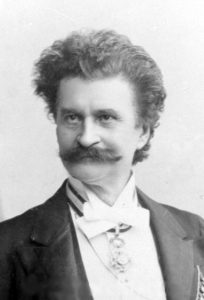Yesterday’s Music History Monday marked the occasion, on January 20, 1982, when Ozzy Osborne bit the head off of a dead and decaying bat during a performance at the Des Moines Veterans Memorial Auditorium. To his credit, Osbourne thought that the bat-like other such rodents and reptiles tossed on stage during his performances – was a toy. However, this fact should not absolve him of being a disgusting, drug-and-alcohol addled, pee-in-your-beer-mug (a favorite game of his) slime bucket; on other occasions Osbourne was known to have purposely consumed living creatures. For example, in 1981, smashed off his gourd during a meeting with record company executives in Los Angeles, he bit the heads off of two live doves to show his displeasure with the progress of the negotiations. In 1984, on tour with the heavy metal and umlaut-abusing band Mötley Crüe, Osbourne participated in gross-out competitions with the bass guitarist Nikki Sixx. It was during such a contest that Osbourne snorted a line of ants from the pavement and then allowed them to crawl out of his mouth.
That’s a winner.

But back to the bat. I’d suggest that we do not perceive them as the sweet, furry, adorable, pug-nosed creature pictured above. Rather, for the majority of us, chiroptophobia is the name of the game: fear of bats. And why not? For all of Woody Allen’s assertion that pigeons are “rats with wings”, it is bats that actually look like rats with wings, or at least mice with wings. (Indeed, that’s what the German word for bat means: Fledermaus translates as “fluttering mouse.”)
(In all fairness to bats, we would observe that they are not even remotely related to rodents but rather, genetic analysis now classifies them as being part of a superorder of mammals that includes pangolins – scaly anteaters – and whales!)
Generally speaking, then, bats give the majority of us the willies (or “spells of nervousness”, the etymology of which likely stems from the woollies, “a dialectal term for nervous uneasiness, probably in reference to the physical itchiness of wool garments”).
However, not all bats give us the “woollies”, or the “willies”, or “spells of uneasiness” of any kind. Indeed, there is a bat that every one of us should adore, a bat that is brilliant, historically timely, sardonic, and fun, and that bat is the opera Die Fledermaus with a libretto by Carl Haffner and Richard Genée and music by the inimitable Johann Strauss Junior (1825-1899).

Johann Strauss Junior – The Composer for his Time
The list of great composers who have lived and worked in Vienna outdoes that of any other city on the planet: Haydn, Mozart, Beethoven, Schubert, Brahms, Mahler, Wolf, Zemlinsky, Schoenberg, Webern, and Berg all called Vienna home. But the composer who best captured the pulse of the city itself was the so-called “Waltz King”, Johann Strauss Junior.
The hyper-critical, curmudgeonly, prickly-even-on-his-best-days Johannes Brahms (1833-1897) understood this completely, and he loved and respected Strauss’ music more than that of any other of his contemporaries. At a party at Strauss’ home, Brahms was asked by Strauss’ daughter Alice to sign her autograph “fan”. Brahms was all-to-happy to do so. He jotted down the beginning of her father’s Blue Danube Waltz under which he wrote: “Unfortunately NOT by yours truly, Johannes Brahms.”

At the heart of Johann Strauss Junior’s quintessentially Viennese music is that genre of dance music called the waltz. It is likely that most of us consider the “waltz” to be a three-step choreographic burden, one to be borne at weddings and anniversaries during which we shuffle about to the scintillating strains of such standards as the Anniversary Waltz and Sunrise, Sunset.
It is easy, today, to forget that at the time of its creation, the waltz was considered a lewd and lascivious dance, one that led to moral degeneracy in this life and damnation in the next! That’s because from its inception as an Austrian’s peasant dance in the mid-eighteenth century, waltzing dancers held each other as closely as possible (at a time when courtly dancing forbade almost any physical contact).
The physicality of this new, gliding and whirling dance made it extremely popular among the lower classes, who were no more likely to dance the more sophisticated Minuet than Ozzy Osborn a Virginia Reel. By the late-eighteenth century, the whirling associated with the dance had given it is name: “waltzer” or “waltz”, which comes from the German “walzen” which means “to turn”.
The ever-more-popular waltz became the “politically ideal” dance of the Enlightenment: a dance in which courtly ritual gave way to sensuality and individual pleasure. By the late eighteenth century, it was being danced by the middle and upper classes, to the great consternation of those self-righteous moralistas who make it their business to quash the pleasure of others.
(There is the story of the old English dowager watching a young couple waltzing: wide-eyed and outraged she asked incredulously “are they married?”)
By the mid-nineteenth century, the waltz had become the single most popular ballroom dance in the Western world. In nineteenth-century Vienna, the waltz became an industry: Joseph Lanner and Johann Strauss Senior composed hundreds of waltzes that were heard throughout Europe. Strauss’ son Johann Strauss Junior picked up where he left off, and raised the waltz to a form of high art. Johann Strauss II composed some of the best known and best-loved music of the nineteenth century, including The Blue Danube Waltz, Tales from the Vienna Woods, and Die Fledermaus. … learn more about Die Fledermaus and Dr. Bob’s prescribed production, only on Patreon!
